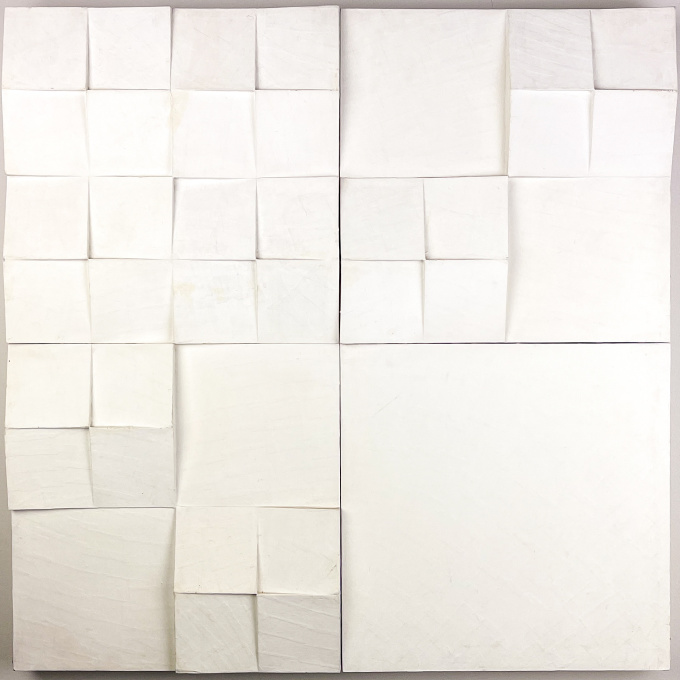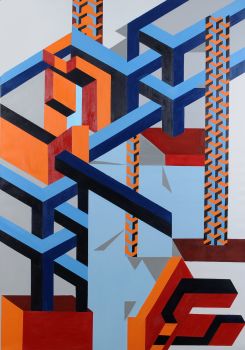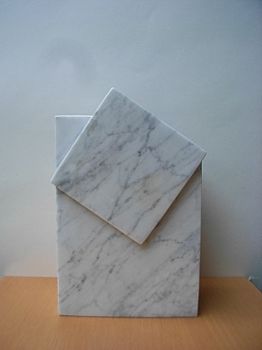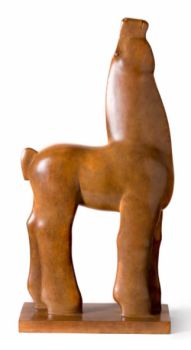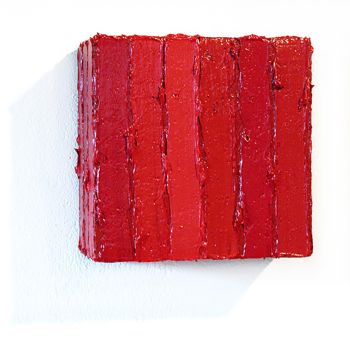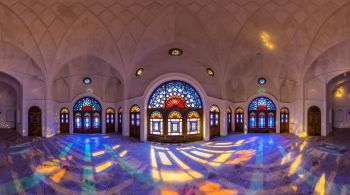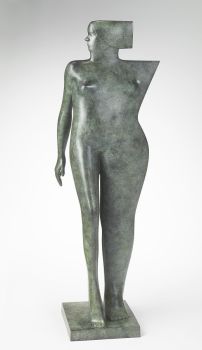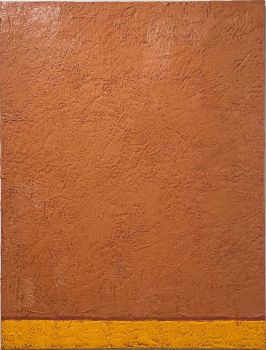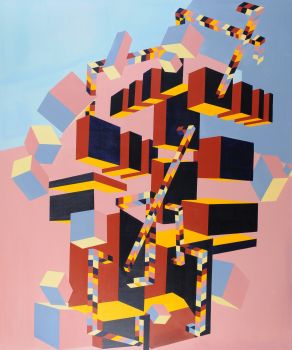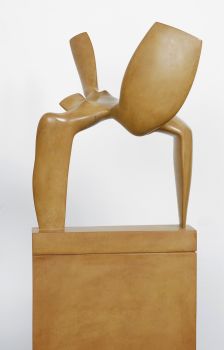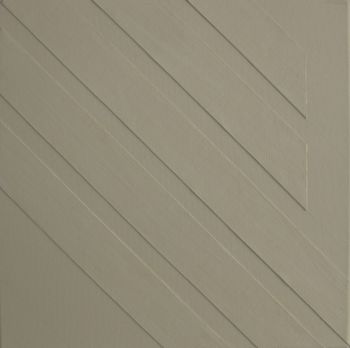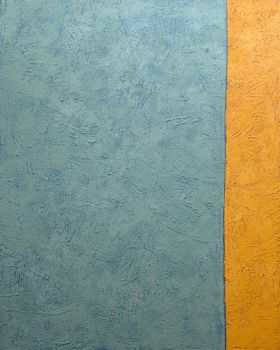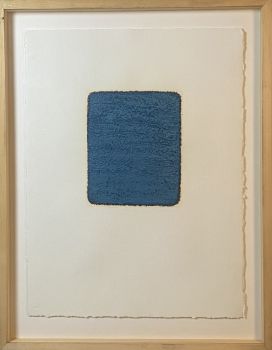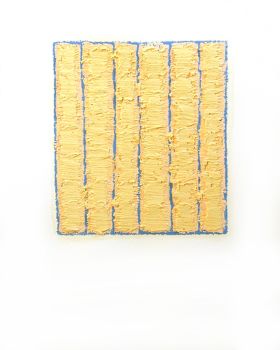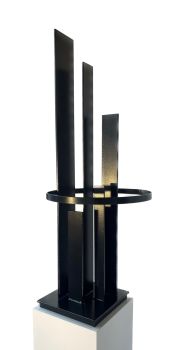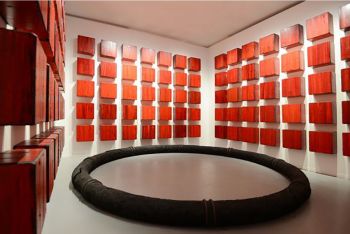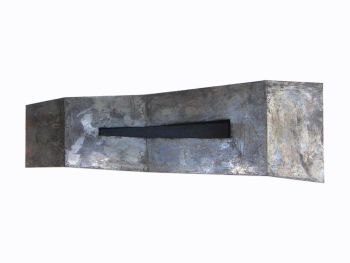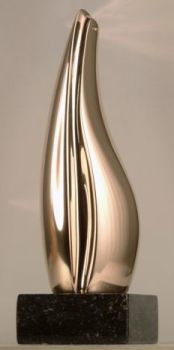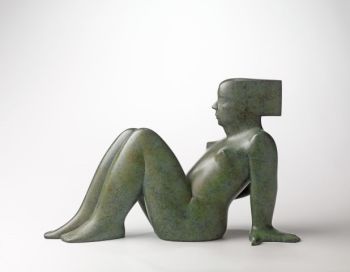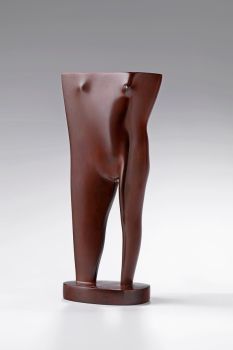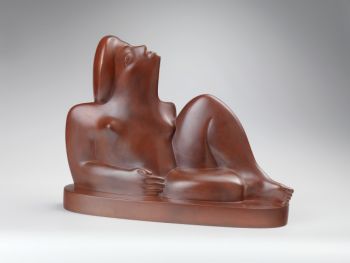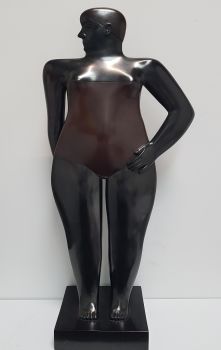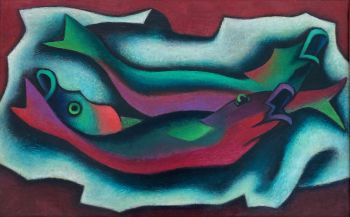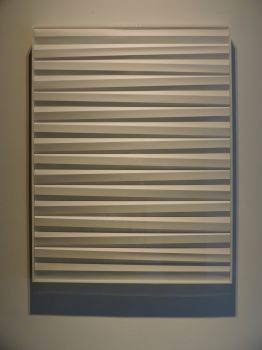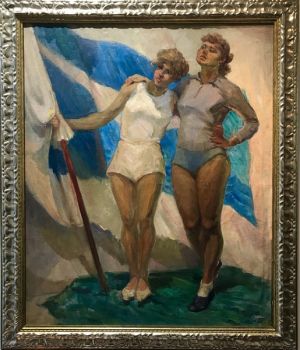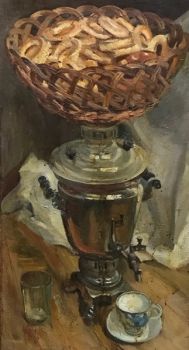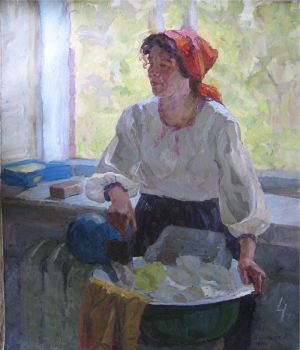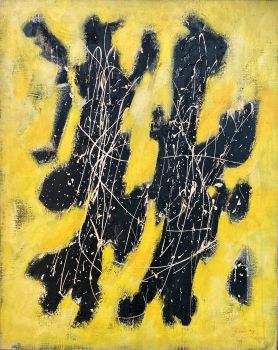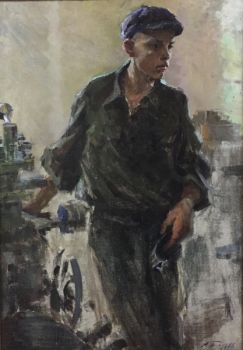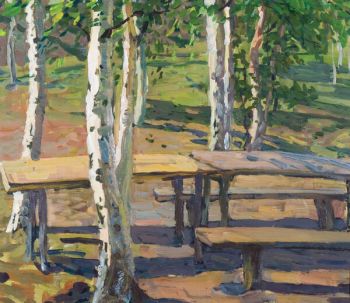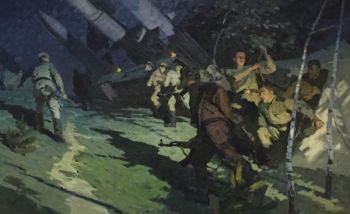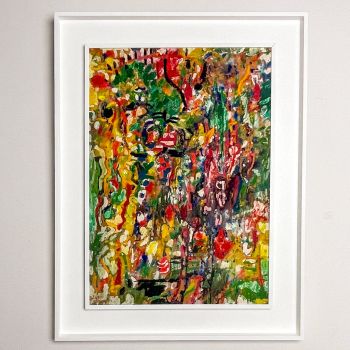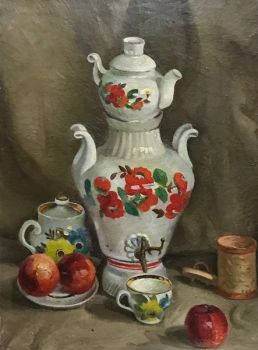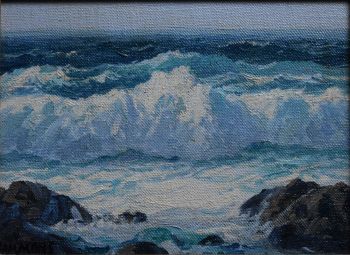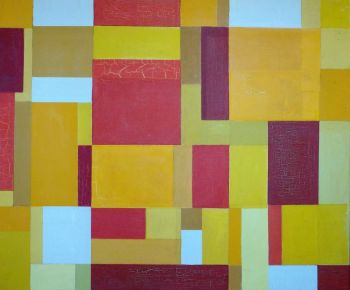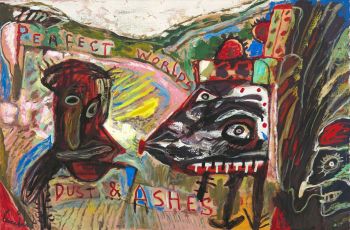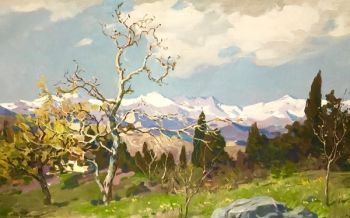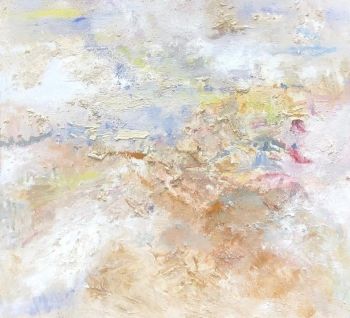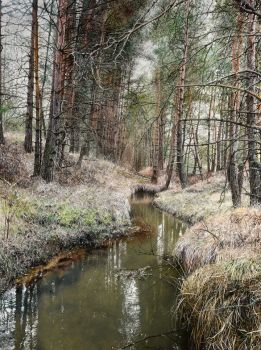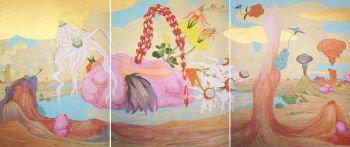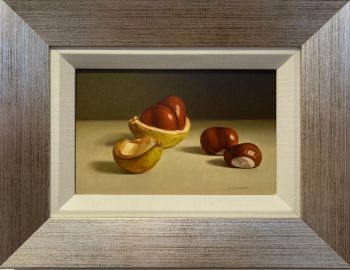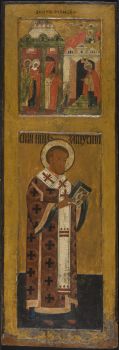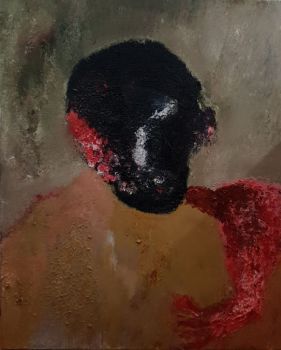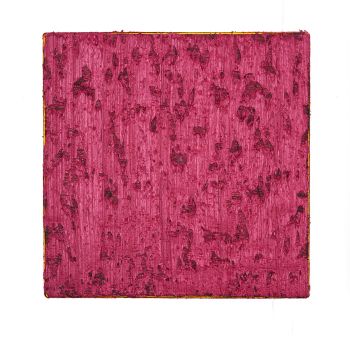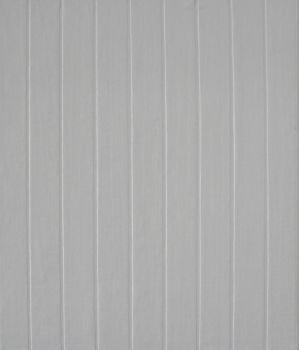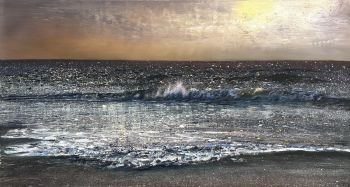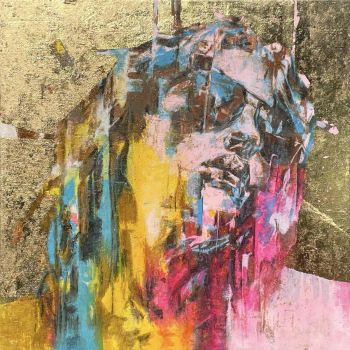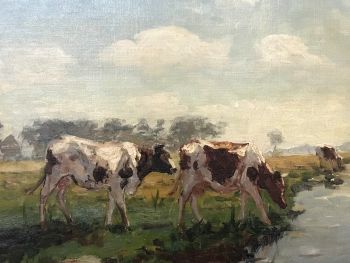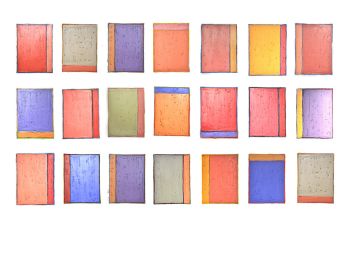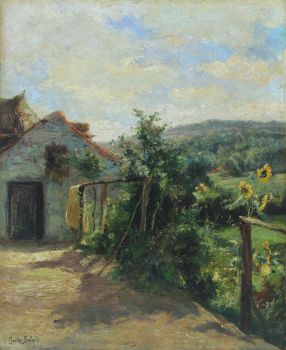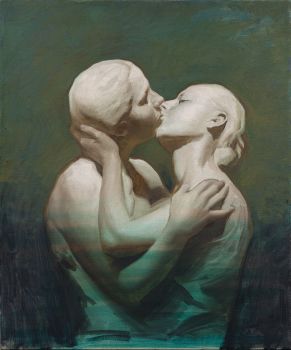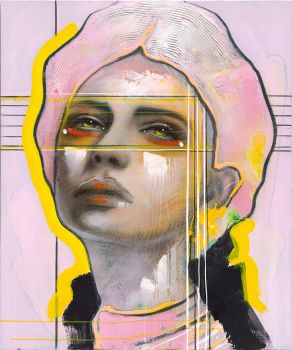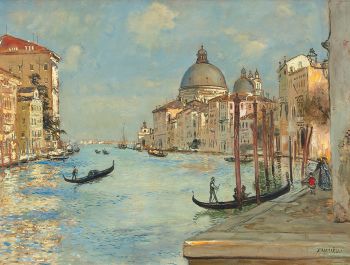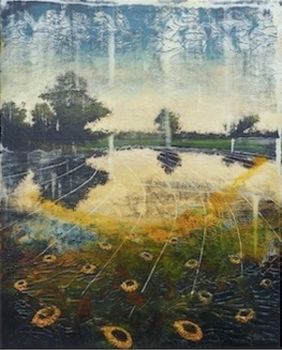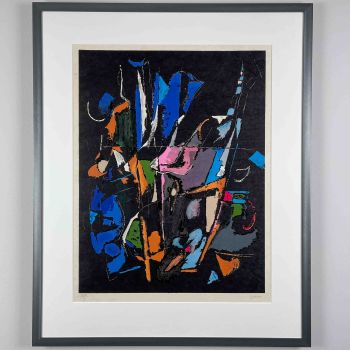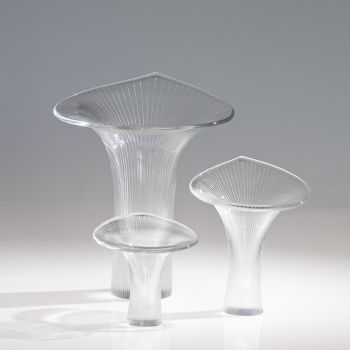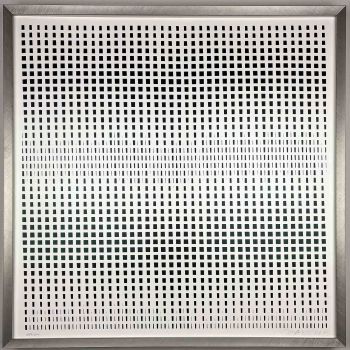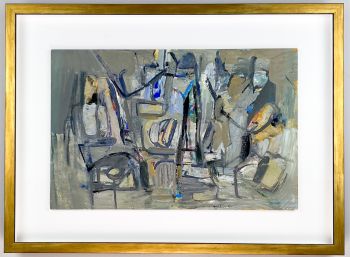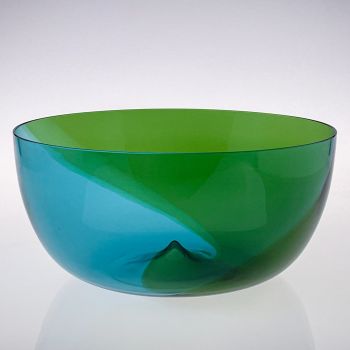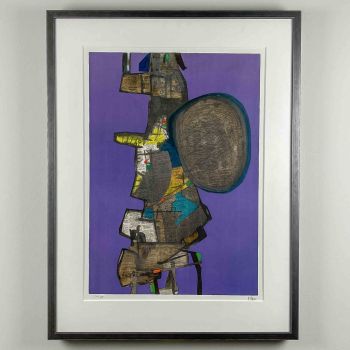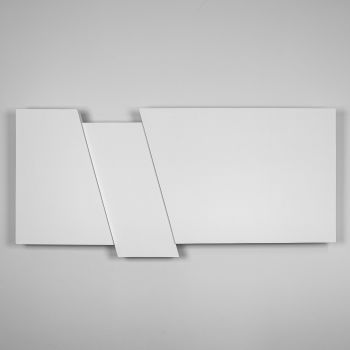Jaap Egmond – “IH 11-IH 12-IH 15-IH 16”, 1976 – relief: paper mache on wood, painted 1976
Jaap Egmond
HoutPapier-machéVerf
80 ⨯ 80 ⨯ 6 cm
ConditionGood
Prijs op aanvraag
Van Kerkhoff Art
- Over kunstwerkAn original relief – painted paper mache on wood – by the Dutch artist Jaap Egmond. Sculpted in May and June 1976. Signed, titled and dated by the artist. The relief consists of four pieces each signed, titled and dated on the reverse, merged together in the final artwork. In clockwise order (seen from the front) the quarters are titled “IH 11”, “IH 12”, “IH 15” and “IH 16”. Jaap Egmonds works are very mathematically driven – very much in contrast with his inspirer Jan Schoonhoven. This work is a prime example of this where the diagonally opposite quarters complement each other mathematically.
About Jaap Egmond
Jacob Johannes (Jaap) Egmond (New York City 1913 – Amstelveen 1997) was a Dutch artist, sculptor, painter, teacher and also a gifted pianist.
Born in New York as the son of a captain on the deep sea, moved back to the Netherlands with his family due to the threat of World War I. He grew up in Amsterdam and completed his training as a drawing teacher at the Rijksinstituut tot Opleiding van Tekenleraar from 1932 to 1936. In his early years, he also studied piano at the Amsterdam Conservatory of Music.
After his training, Egmond started working as a drawing teacher at several schools in Amsterdam in 1937, which was the beginning of a lifelong dedication to teaching. After the war, he taught at the Vossius Gymnasium and later at the Kweekschool and the Pedagogical Academy in Amsterdam. In collaboration with colleague Klaas de Poel, he developed a new teaching method for the Teacher Training College.
In 1969, Jaap Egmond settled as an artist in Amstelveen. During his career, he made abstract reliefs, strongly influenced by the work of Jan Schoonhoven, with which he became a representative of minimalism in the Netherlands in the 1970s and 1980s. His work, ranging from cardboard and paper to freestanding work in steel, was characterised by the play of light and shadow and monochromy.
Egmond exhibited his art from the early 1970s in galleries and art institutions. In the 1980s, he also experimented with total theatre, with his large plastics serving as sets for modern music performances, in collaboration with Wim de Ruiter.
Jaap Egmond is remembered as a constructivist artist, whose work is influenced by the Dutch Zero movement. His creations reflect a constant search for form, light and shadow, and monochromy, through which he left a lasting impact on Dutch art.
Signed
Signed, titled and dated by the artist on the reverse
Condition
Good original condition, some stains, small water-damage on the side.
Provenance
Borzo Gallery, Amsterdam
Dimensions
Artwork
Height 80 cm
Width 80 cm
Depth 6 cm - Over kunstenaar
Jacob Johannes (Jaap) Egmond (geboren op 31 augustus 1913 in New York, overleden op 26 november 1997 in Amstelveen) was een veelzijdige Nederlandse kunstenaar, bekend om zijn werk als beeldhouwer, schilder, en docent, evenals zijn vaardigheden als pianist.
Egmond heeft een significante bijdrage geleverd aan de kunsteducatie en -theorie, met name op het gebied van kunstbeschouwing en tekenonderwijs.
Zijn oeuvre, dat voornamelijk bestaat uit abstracte reliëfs, toont een duidelijke verwantschap met het werk van Jan Schoonhoven en plaatst hem als een vooraanstaande figuur binnen de minimalistische beweging in Nederland gedurende de jaren zeventig en tachtig.
Geboren in New York als zoon van een kapitein, verhuisde Egmond met zijn familie terug naar Nederland vanwege de dreiging van de Eerste Wereldoorlog, waar hij opgroeide in Amsterdam. Tussen 1932 en 1936 volgde hij de opleiding tot tekenleraar aan het Rijksinstituut tot Opleiding van Tekenleraren in Amsterdam, na eerst een jaar piano te hebben gestudeerd aan het Conservatorium van Amsterdam.
Na zijn opleiding begon hij in 1937 als tekendocent in Amsterdam, een rol die hij zijn hele carrière zou vervullen. Na de Tweede Wereldoorlog doceerde hij aan het Vossius Gymnasium en later aan de Pedagogische Academie in Amsterdam, waar hij tekenen, handenarbeid, en kunstgeschiedenis onderwees.
In de jaren zestig ontwikkelde hij samen met collega Klaas de Poel een vernieuwende lesmethode voor de Kweekschool, die in verschillende lesboeken werd opgenomen.
In 1969 vestigde Egmond zich als kunstenaar in Amstelveen, waar hij zich toelegde op het creëren van honderden reliëfs in karton en papier, later gevolgd door experimenten met staal en schilderkunst. In de jaren tachtig werkte hij samen met Wim de Ruiter aan totaaltheaterprojecten, waarbij zijn grote plastieken een dynamisch decor vormden voor moderne muziekoptredens.
Egmond, die in zijn jonge jaren twijfelde tussen een carrière als pianist of tekenleraar, trad later op als begeleider van zangers binnen een besloten kring. Hij was getrouwd met Joke Sprokkereef (1918-1986), een onderwijzeres, en samen hadden ze vier kinderen. Het gezin woonde in Amstelveen na de Tweede Wereldoorlog.
Als kunstenaar wordt Egmond beschouwd als een constructivist, sterk beïnvloed door de Nederlandse Nul-beweging. Zijn werk is kenmerkend voor het gebruik van licht en schaduw en een voorkeur voor monochromie, waarmee hij een unieke bijdrage heeft geleverd aan de Nederlandse moderne kunst.
Bent u geïnteresseerd om dit kunstwerk te kopen?
Artwork details
Related artworks
- 1 - 4 / 24
 Gecureerd door
Gecureerd doorGallerease Magazine
1 - 4 / 24Rene Rietmeyer
"Japan, Tokyo, Kudan House" 20212021
Prijs op aanvraagEuropean Cultural Centre Collection
1 - 4 / 24- 1 - 4 / 12

